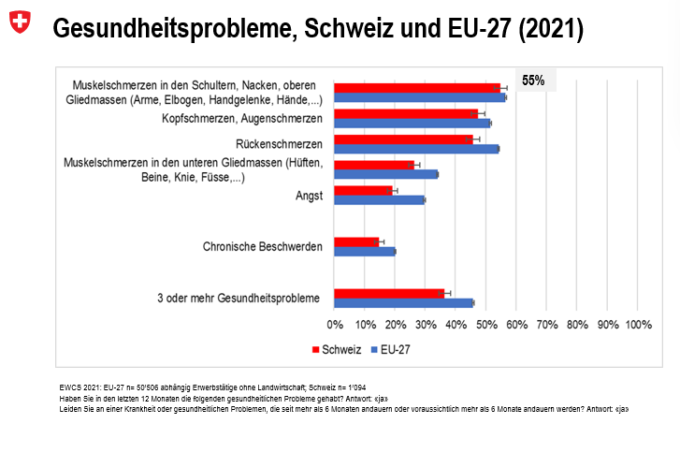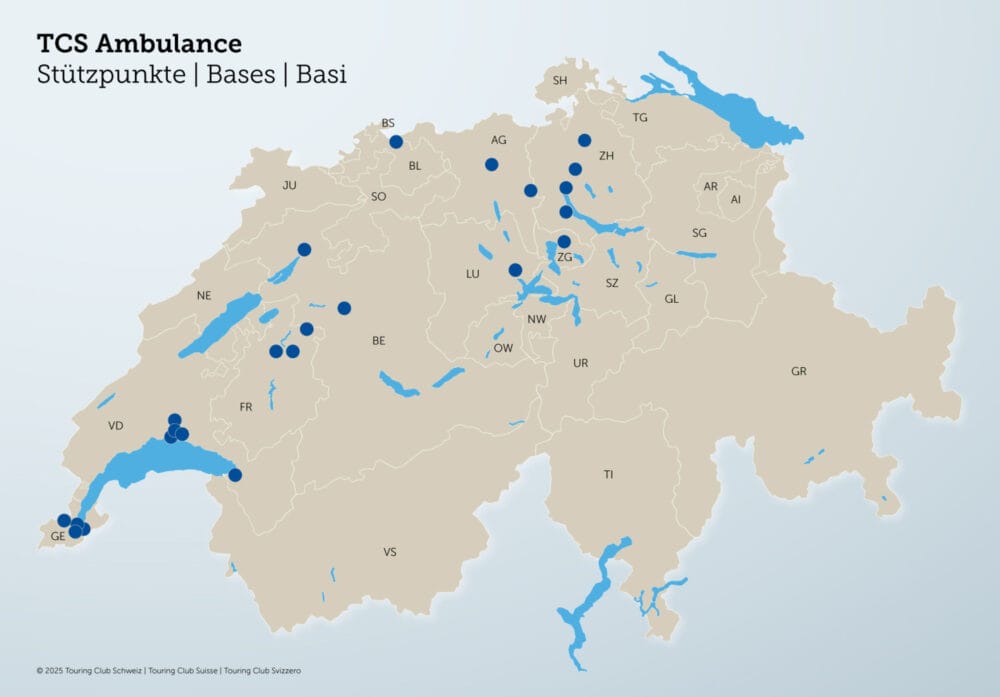Swiss working conditions and health in European comparison
23 percent of employees in Switzerland identified a safety or health hazard because of work in 2021. This was significantly higher in Europe (34%). A majority of Swiss employees reported strain on the musculoskeletal system (55%) and a high work pace (59%).

The State Secretariat for Economic Affairs (Seco), in cooperation with the Federal Coordination Commission for Occupational Safety (EKAS), participated for the third time in the European Working Conditions Survey in 2021. In a European comparison, significantly fewer Swiss employees report that their health or safety is endangered by their work (23% vs. Europe: 34%), Seco writes. Also, the proportion of employees with health complaints such as muscle pain in the shoulders, back pain and headaches is smaller in Switzerland (37 percent) than in Europe, where 46 percent of employees report three or more health complaints. Despite the good starting position, Switzerland has particular challenges in the area of health protection at the workplace, Seco emphasizes.
Type of loads
Strains on the musculoskeletal system and the high intensity of work are the most common strains in Switzerland and Europe. At 59 percent, employees in Switzerland are affected by a comparatively high pace of work (Europe: 49%). In contrast, the proportion of Swiss employees who experience musculoskeletal stress is lower at 55 percent (Europe: 66%). Furthermore, employees in Switzerland work more often in their free time in order to fulfill their work requirements (36% vs. Europe: 29%).
Relieving factors make Swiss difference
According to Seco, one of the strengths of the Swiss labor market is the markedly higher degree of individual freedom to make decisions (57% vs. Europe: 48%), the good career opportunities (59% vs. Europe: 50%) and the participation and say in the workplace (65% vs. Europe: 57%). In addition, the vast majority of employees in Switzerland as well as in Europe could count on support from superiors (71% vs. Europe: 69%) and especially colleagues (80% vs. Europe: 79%), according to the media release.
Avoid imbalance
27 percent of employees in Switzerland reported in 2021 that the number of burdens would exceed the number of reliefs. This puts the proportion in Switzerland below the average for Europe (31%). Work situations in an imbalance between stressful factors and resources can endanger health in the long term, according to the media release.

The EWCTS study
More than 71,000 employees from 35 countries were surveyed in the European Working Conditions Survey 2021, Seco writes. The Swiss sample consists of 1,224 workers and is representative of the entire workforce. Due to the Covid 19 pandemic, the survey had to be switched from face-to-face interviews to telephone interviews, according to the report. As a result, it is virtually impossible to make comparisons with the previous surveys in 2005 and 2015, it said. The monitoring of the development of working conditions and the comparison with neighboring countries show the authorities in which areas possible health risks occur and control is indicated.









